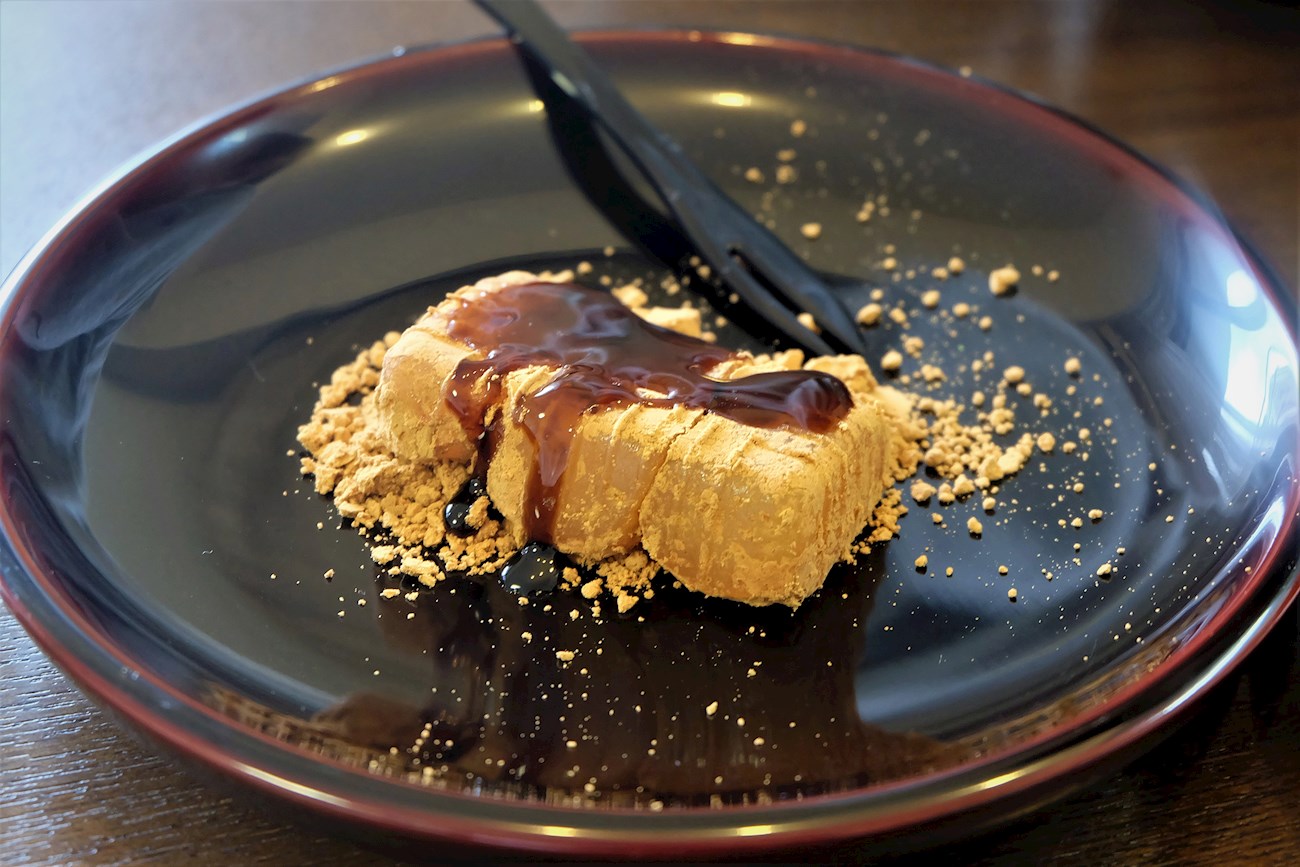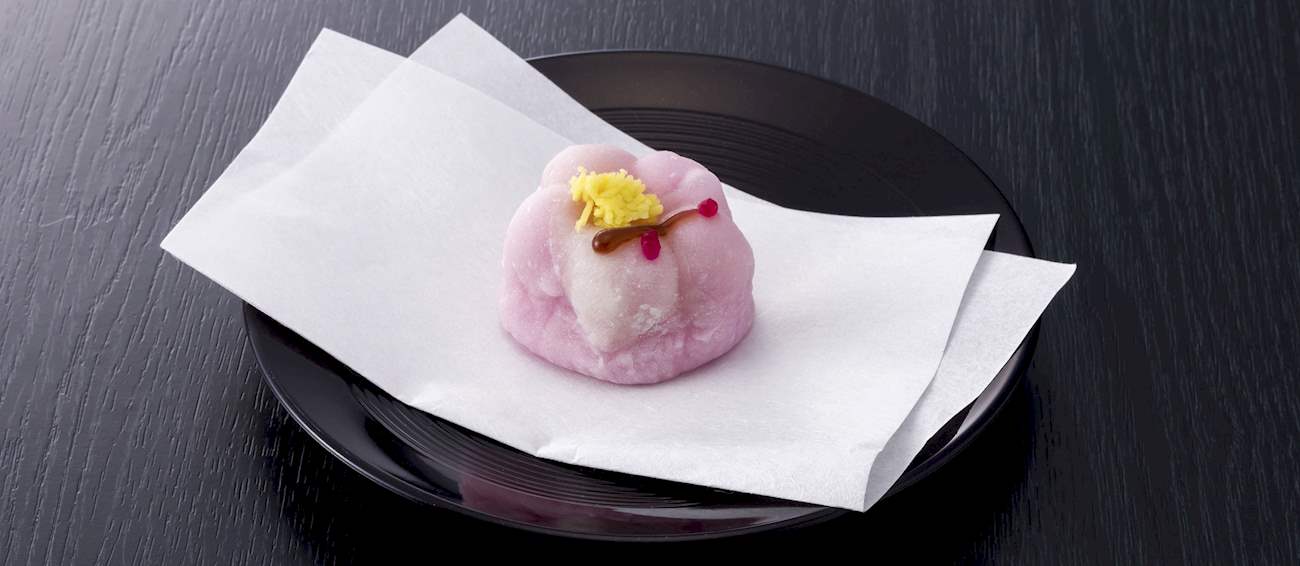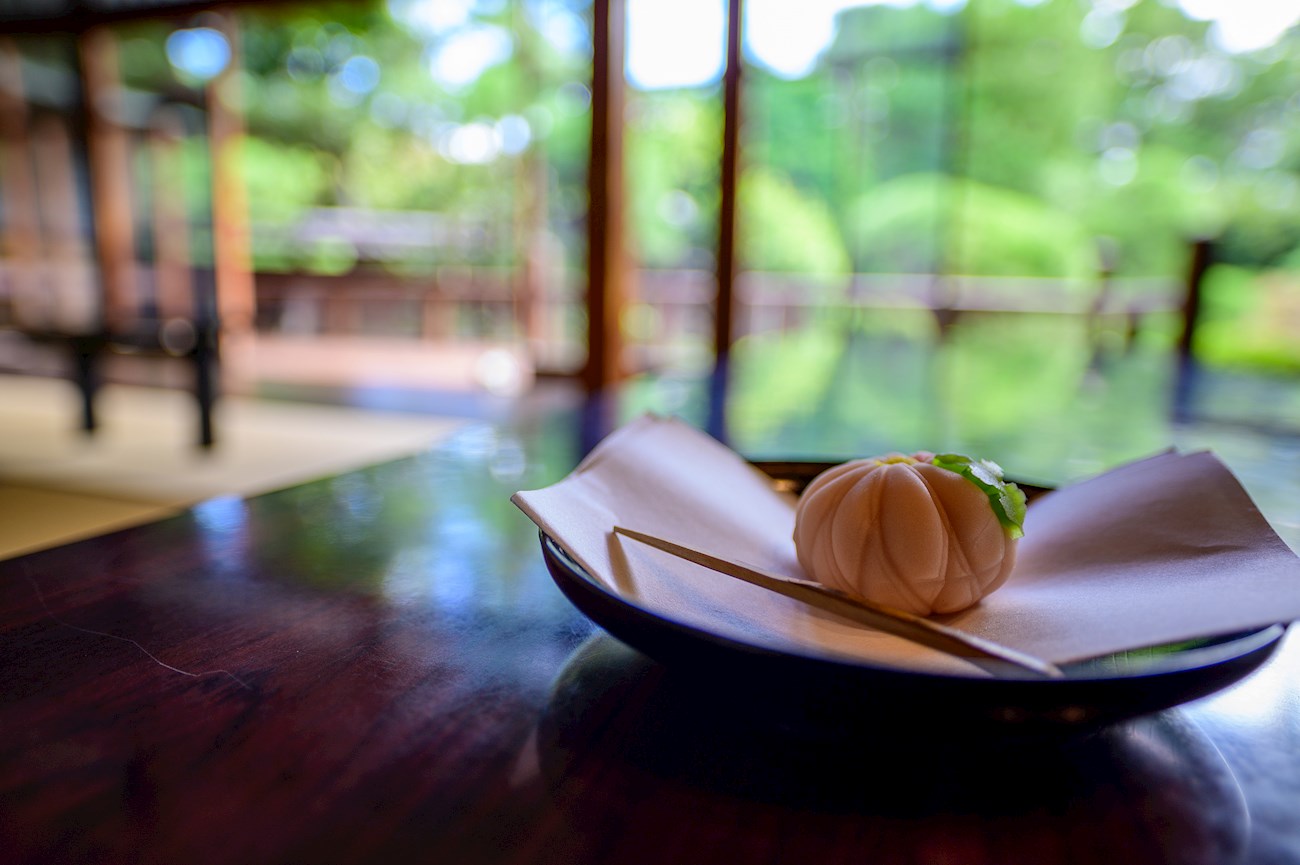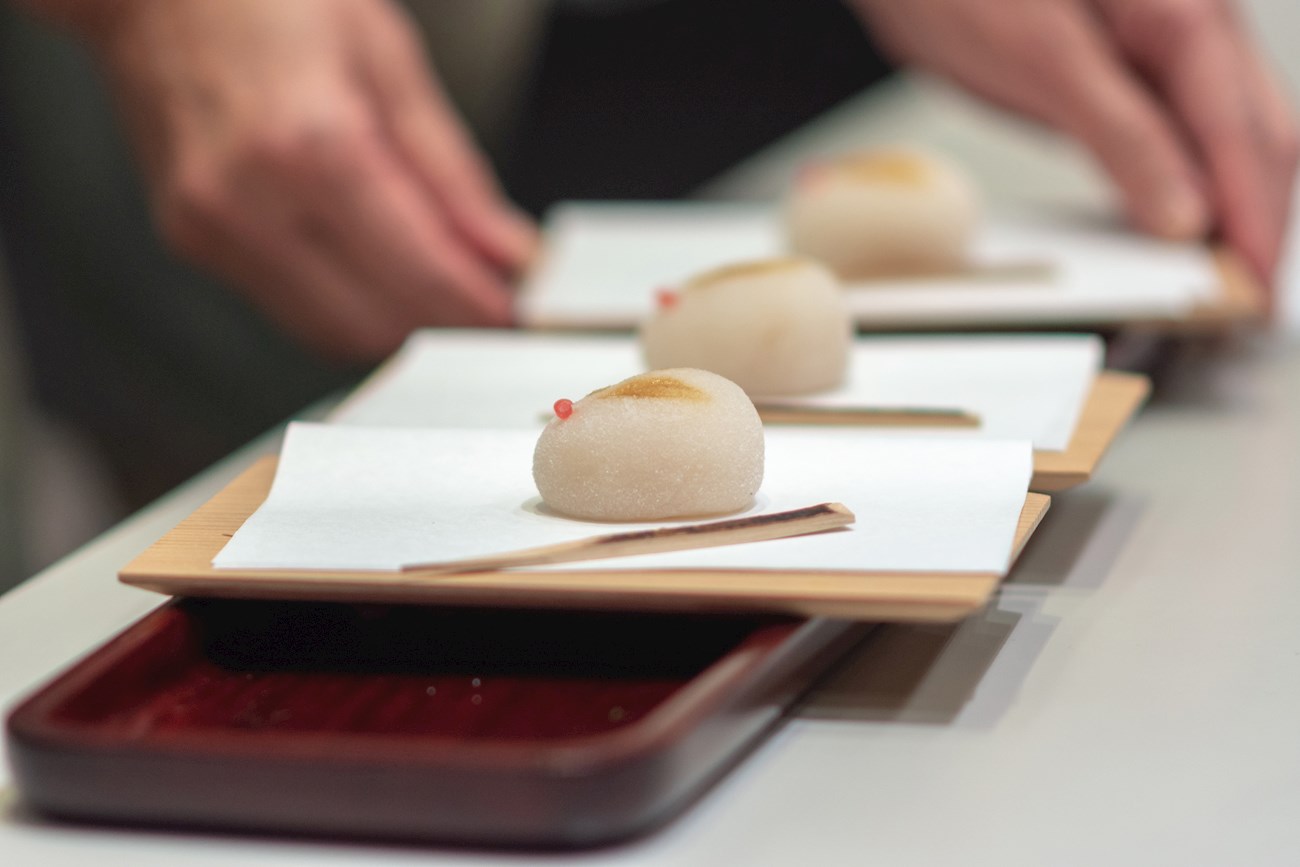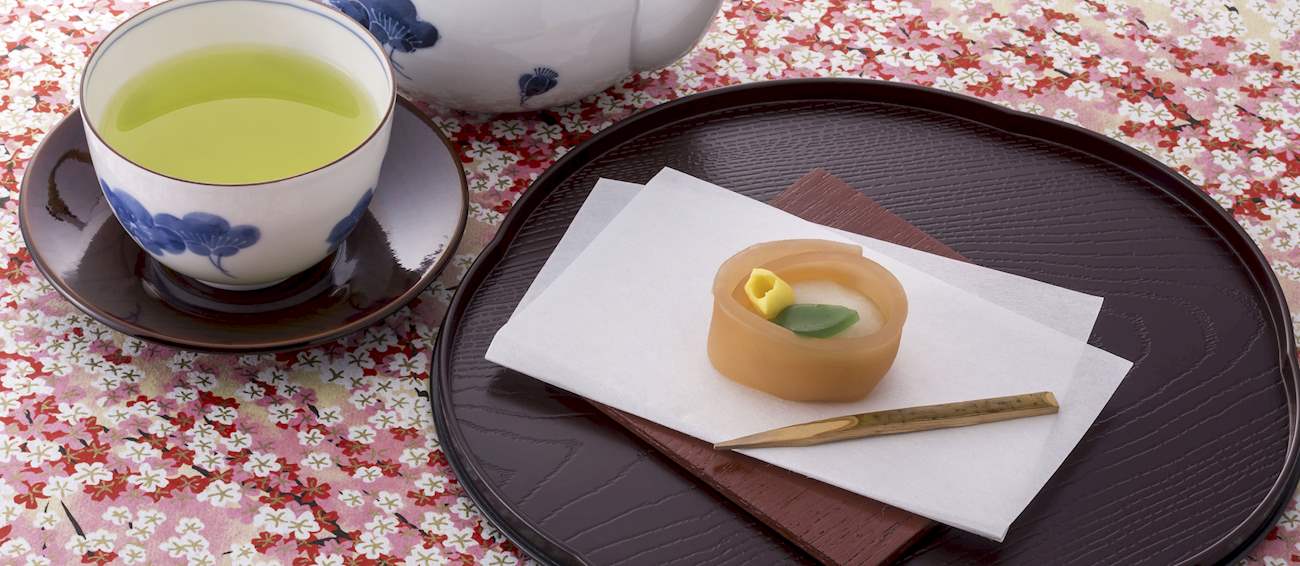Wagashi
(和菓子)
Wagashi are traditional Japanese sweets that are usually made from natural, plant-based ingredients such as grains and azuki beans. The sweet treats are typically served with tea and are classified into three categories: namagashi (fresh confectionery), han namagashi (half-dry confectionery), and higashi (dry confectionery).
Wagashi is characterized by its design, so in spring, when cherry blossom is in full bloom, the producers make wagashi in cherry blossom shapes, using cherry petals or leaves. The origins of these sweets date back to the Yayoi Era when there was nothing more than natural nuts, fruits, and berries, so wagashi was influenced by the grain processing skills introduced from China.
Most of the basic forms of wagashi seen today are derived from that era. The introduction of sugar helped in further development of wagashi, and during the early Edo Period, the sweets developed into numerous varieties and started to be used at tea ceremonies, given as gifts, or consumed as afternoon snacks.
After that, wagashi was perfected into the style that we know and love today.
